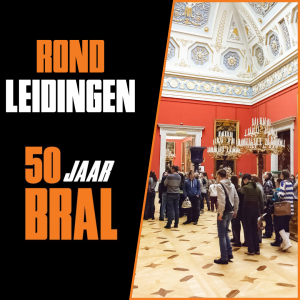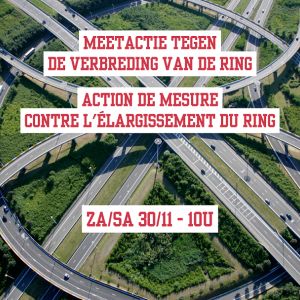
About BRAL
What is Bral?
Bral is a non-profit-organisation which stands for Brusselse Raad voor het Leefmilieu (Brussels Environmental Association). It is an independent network of residents' committees and active residents who took interest in the city environment in every meaning of the word, which means as much to the environment itself as to mobility, urban development as urban renewal.
Moreover, Bral is the Dutch-speaking environmental federation in the Region of Brussels and is in this sense considered by the regional and federal governments to be the official advocate representative for the active residents and residents' groups. This is why Bral is established in various official consultation bodies like the Environmental Council and the Regional Development Committee.
As we are in the bilingual context of Brussels, Bral does of course work with all residents, French and Dutch-speaking.
What does Bral stand for?
- urban development that promotes secure housing and fights speculation
- a participative urban renewal policy that is against dualization and promotes inclusion of residents and users
- comfortable and affordable housing, in the first place for current residents
- a city that produces less garbage
- a different model of mobility in the city, focusing on the vulnerable road user and on livable streets and squares
What does Bral do?
Bral serves as an instrument for the active and organized 'Brusselaars' who want to work on the city constructively and in keeping with Bral's mission because Brussels is our shared pet project. Armed with a knowledge of plans, laws, regulations and studies and moreover with a healthy dose of refreshing ideas, Bral supports local groups dedicated to creating a livable city. We are not a neutral mediator. We look for like-minded partners. This means in the first place the neighbourhood committees, residents' associations and local activist groups.
Our operations that offer support to local groups include:
- gathering information, which frequently concerns complicated plans, technical concepts, complex legislation and policy developments, and making this information accessible, understandable, and manageable
- helping to determine strategies starting from our own vision and experience, for example, in following up on planning procedures (public hearings, ...)
- providing publicity, giving shape and recognition to positions on a more livable Brussels
This is all accomplished through residents' meetings, media campaigns, debates, workshops and other educational opportunities, participating in official consultative procedures and on counseling bodies, our newsletter 'Alert', and our website.
Besides this, Bral uses the observations and ideas of its supporters as its starting point for lobbying and it speaks out critical views on policy. Finally, Bral organizes sensitization campaigns aimed at the general public.
Let it be clear, however, that our work is never finished!
What can you expect from Bral?
- support for local groups (see above)
- issues concerning urban development, environmental and mobility problems in Brussels
- issues concerning district committees
- issues concerning large, current dossiers like Thurn & Taxis and the European quarter
- publications
- retrieving information from our activity archives
Where does Bral come from?
The first residents' movements and nature associations originated from the fringes of the democratization movements of May 1968, and they include de Slag om de Marollen (the Battle over the Marollen), the residents' struggle against Manhattan square in the North district and the activist groups in Maalbeek valley. The first neighbourhood committees sprang up in their wake. In 1973, a number of Dutch-speaking Brusselaars decided to keep themselves directly involved in the development of their city.
Bral is one of four Belgian environmental federations and, in its battle for a livable city, it places a heavy accent on the fight against plans that threaten residential function and sometimes the entire residential district: the concentration of businesses around the North (train) Station, the extension of the European Parliament district, the advent of the high speed trains (HST) into the South (train) Station, the city cancers in the inner city…
How did Bral evolve?
Bral celebrates its 30th anniversary in 200(30)! A great deal has changed in the city that was sometimes called 'the city with 100 district committees' in the 1970s. Public discourse has recycled our demands of 30 years ago, even partly achieved them, and the city movement has evolved along with them.
Whereas in the beginning, a great deal of attention was focused on the protection of nature and of the traditional fabric of the city, in recent decades, the emphasis shifted to the quality of city life, with themes like resident participation, reducing garbage and socially-minded urban renewal. Accessibility also became a problem. Through the rising dualism, it becomes increasingly difficult to enjoy what the city has to offer. Issues like secure housing, safe cycling, and stopping through traffic as well as ensuring clean air and water are still very current.
After the Capital Region is established in 1989, Brussels develops an independent administration and legislation. This means maneuvering to catch up; finally, a legal framework is established for an environmental and urban development policy in Brussels. Bral becomes increasingly recognized as a consultation partner on various councils and is given important assignments such as disseminating information on the environment and urban planning, and regional coordination of the Week van Vervoering ('Mobility Week') with Car Free Day. Sister not-for-profit organizations focused on specific themes are also born, like the Brusselse Bond voor het Recht op Wonen (the Brussels Association for the Right to Housing) and the Natuur- en Milieueducatie Link Brussel (the Brussels Nature and Environmental Education Link).
During the 1990s, Bral took greater steps in local matters by cooperating with residents in the longer term on local city development projects in the field. Examples include preparing three district contracts in Sint-Joost-Ten Node and diagnosing vacancy and public space in the Maritiem district in Molenbeek.
